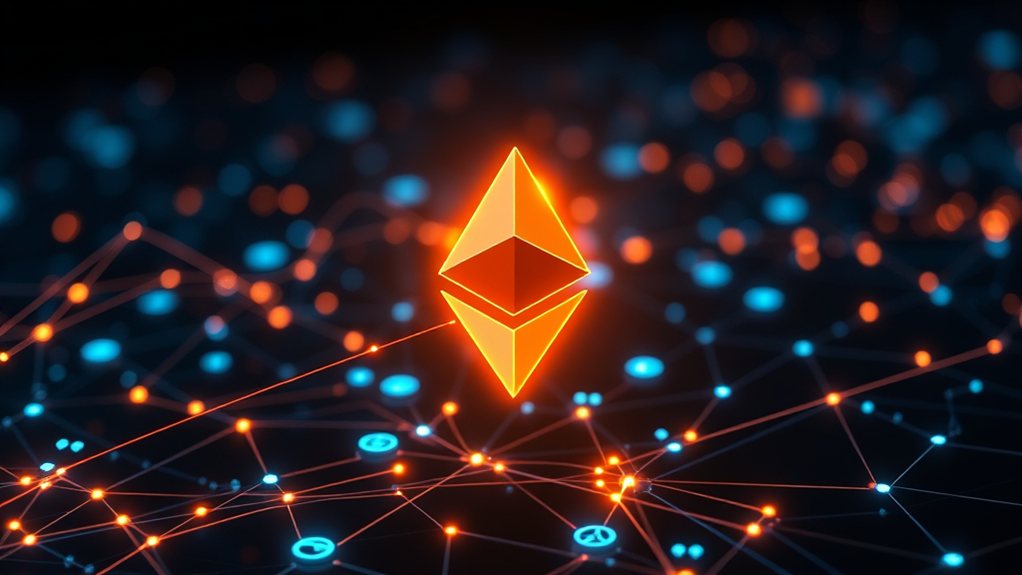DeFi (Decentralized Finance) is a blockchain-based financial system that operates without banks or middlemen. It uses smart contracts, primarily on Ethereum, to enable peer-to-peer transactions, lending, and trading. DeFi offers greater accessibility, lower fees, and more transparency than traditional banking. Popular protocols include Uniswap, Aave, and MakerDAO. The market has grown to $76.3 billion as of November 2023. The technology continues to evolve despite facing security and regulatory challenges.

Decentralized Finance, or DeFi, is a revolutionary financial system built on blockchain technology that's changing how people handle money. Unlike traditional banking, DeFi doesn't need middlemen like banks or financial institutions. Instead, it uses smart contracts, which are self-executing programs on blockchains, mainly Ethereum. These smart contracts automatically carry out financial transactions when certain conditions are met.
DeFi aims to create an open financial system that anyone with an internet connection can access. The system includes several key components. Decentralized exchanges (DEXs) let people trade cryptocurrencies directly without going through an exchange company. Lending platforms allow users to lend their crypto and earn interest or borrow against their holdings. Stablecoins provide a way to hold digital currencies that maintain a steady value, usually pegged to the US dollar.
The benefits of DeFi are significant. It offers greater access to financial services for people worldwide, including those without traditional bank accounts. Transactions often have lower fees and process faster than traditional banking. Everything happens on public blockchains, so there's more transparency. DeFi also allows for innovative financial products that can work together in ways traditional finance doesn't permit. The non-custodial nature of DeFi means users always maintain control of their own funds without relying on third-party custody.
Several popular DeFi protocols have emerged. Uniswap lets users trade tokens directly. Aave and Compound offer lending and borrowing services. MakerDAO creates the DAI stablecoin. Curve Finance specializes in stablecoin exchanges. These protocols have attracted billions of dollars in user funds. The introduction of Compound Finance's Comp token in 2020 revolutionized the DeFi space by enabling yield farming and liquidity mining as new investment opportunities. With over 24,000 cryptocurrencies in existence, DeFi has become one of the most important use cases for digital assets in the evolving financial landscape.
Despite its promise, DeFi faces important challenges. Smart contracts can have bugs that hackers exploit to steal funds. Regulations around DeFi remain unclear in most countries. Cryptocurrency prices can be very volatile, creating risk. Blockchain networks sometimes struggle with speed and high fees during busy periods. Many DeFi applications are also too complex for average users.
The DeFi market continues to grow rapidly. As of November 2023, about $76.3 billion is locked in DeFi protocols, representing 47% year-over-year growth. More than 4 million unique wallet addresses interact with DeFi services. Ethereum hosts about 58% of all DeFi activity, though other blockchains are gaining ground. DeFi tokens make up about 5% of the total cryptocurrency market value.
Looking ahead, experts predict DeFi will develop more connections with traditional finance. User interfaces will likely become simpler. Different blockchain networks will work together better. Products designed for financial institutions may emerge. While it's still early, DeFi could eventually challenge traditional banking by offering many of the same services without the corporate overhead.
Frequently Asked Questions
How Do I Calculate Potential Returns on Defi Investments?
Calculating potential DeFi returns involves using the Annual Percentage Yield formula: APY = (1 + r/n)^n – 1.
Investors should factor in impermanent loss when providing liquidity to trading pools. This loss occurs when asset prices change after deposit.
Smart contract risks, market volatility, and gas fees can greatly impact actual returns. Historical performance doesn't guarantee future results.
Real-time APY calculators are available on many DeFi platforms.
What Security Measures Protect My Assets in Defi Protocols?
DeFi protocols protect assets through several security measures. Most reputable platforms undergo code audits by specialized firms.
Smart contract insurance provides compensation if hacks occur. Two-factor authentication adds an extra login security layer. Hardware wallets keep private keys offline and safe.
Many protocols use bug bounty programs where hackers are paid to find weaknesses. Despite these protections, risks still exist in this evolving space.
Can Defi Platforms Be Regulated by Governments?
Governments are trying to regulate DeFi platforms, but face significant challenges. The decentralized nature makes it hard to identify who's responsible when problems occur.
Regulators like the SEC in the U.S. and the EU's MiCA framework are developing approaches that target the more centralized aspects of DeFi. Some focus on regulating access points like exchanges or developers.
Complete regulation remains difficult due to DeFi's borderless, autonomous operations.
How Does Defi Impact Traditional Banking Systems?
DeFi impacts traditional banking systems in several key ways.
It removes banks as middlemen, allowing direct peer-to-peer transactions. Customers can borrow, lend, and trade without bank involvement. This threatens banks' revenue from fees and interest margins.
DeFi also offers 24/7 financial services globally, reaching unbanked populations. Traditional banks now face competition in areas they once dominated, including payments, loans, and asset management.
Regulatory frameworks are struggling to adapt to this shift.
What Technical Knowledge Is Required to Use Defi Safely?
Safe DeFi use requires basic blockchain knowledge and security awareness.
Users need to understand wallet management, private keys, and smart contracts. They should recognize common scams and phishing attempts. Knowledge of transaction fees and network congestion helps avoid costly mistakes.
Two-factor authentication and hardware wallets provide extra protection. Users also benefit from understanding specific DeFi protocols before investing in them.










